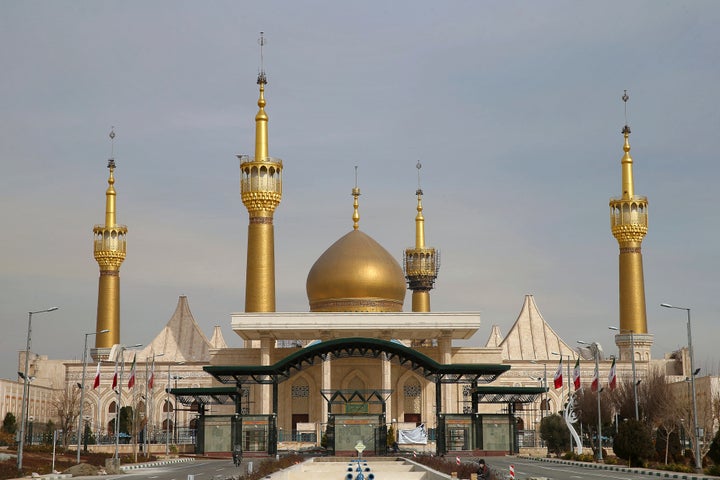Tensions between the United States and Iran are continuing to spiral, despite international calls for de-escalation.
Donald Trump has indicated the US has identified 52 Iranian sites, including some of “a very high level & important to Iran & the Iranian culture, and those targets, and Iran itself, WILL BE HIT VERY FAST AND VERY HARD. The USA wants no more threats!” according to a recent tweet.
If the legacy of the Iraq war can teach us anything, it’s that targeting cultural sites dear to so many is a surefire way to unleash carnage across a region.
To be clear, the intentional targeting of cultural sites can be considered a war crime under international humanitarian law. Recently, Ahmad al-Faqi al-Mahdi was charged by the International Criminal Court for destroying cultural artefacts in Timbuktu.
It is by no means a secret that the US-led invasion of Iraq destabilised the Middle East and resulted in the deaths of at least 180,000 Iraqi civilians. Up until 2006, however, violent attacks in Iraq remained relatively isolated and often targeted occupying US forces. In February 2006, the bombing of the Al-Askari shrine in Samarra, Iraq, shook the nation into a sectarian civil war, as the images of the collapsed golden dome reverberated among the country’s Shia community. The destruction of the shrine, built on the grave of two of the most important figures in Shia Islam, triggered many Iraqi Shia to indiscriminately seek revenge from the Sunni community.
Prior to the US invasion, sectarianism in Iraq was never part of the socio-political lexicon but has now become synonymous with violence in the country. The bombing in Samarra ignited a nationwide outpouring of rage as heavily armed Shia militia fighters took to the streets, firing at Sunni mosques. In the immediate aftermath of the Samarra attack, 29 Sunni mosques were targeted, as well as Sunni political party buildings. Eulogies, normally reserved for mourning religious figures, rallied the Shia community in vowing vengeance over the attacks.
The 2006 attack mobilised Iraq’s diverse demographic with identity politics along sectarian lines, leading many to abandon their names for fear of their religious affiliation being recognised from their namesake. This instability and security gap paved the way for the rise of ISIS and the catastrophic spread of international terror.

At the time, then US President George W. Bush stated, “The United States condemns this cowardly act in the strongest possible terms”. Fourteen years later, and the current US president is threatening similar attacks on Iran, which, like Iraq, also hosts religiously significant sites, including the UNESCO listed Imam Reza shrine. Should this, or similar sites, be attacked across Iran, Trump will create not only enemies in Iran, but enemies from the global Shia community. Considering the militias involved in sectarian violence in Iraq were often Iran-backed, the consequences of an attack on any of the holy shrines dotted around Iran would cause widespread violence.
Apathy towards cultural heritage is not new to the US political sphere. When cultural sites, including the Iraqi National Museum, which houses millennia-old artefacts, were looted during the US invasion of Iraq, then-US defence secretary, Donald Rumsfeld, responded with: “Stuff happens”. To this day, these antiquities have not been recovered and occasionally find their way to auction houses.
Trump often claims his conflict is with the Iranian government and that his administration supports the Iranian people. Only last month, responding to anti-government protests in Iran, Trump tweeted: “The United States of America supports the brave people of Iran who are protesting for their FREEDOM. We have under the Trump Administration, and always will!” Attacking Iran’s cultural heritage goes against this claim and would hurt Iranian civilians, regardless of their political affiliation. Watching Notre Dame burn caused significant emotional trauma for many, the deliberate destruction of cultural sites, would cause similar heartbreak for innocent Iranians.
After receiving backlash for wanting to target cultural sites in Iran, Trump doubled-down his threat, stating, “They’re allowed to kill our people. They’re allowed to torture and maim our people. they’re allowed to use roadside bombs and blow up our people. And we’re not allowed to touch their cultural site?” Even such a threat rewrites the history of insurgency in Iraq, where roadside bombs were funded by people from other gulf states.
Cultural sites should never be used in threats of war. We continue to lament the destruction of Nineveh and Palmyra by ISIS: centuries old history which younger generations will never be able to experience. Trump, with his “disproportionate” war plan, is now suggesting he would do much worse. The consequences of such attacks would be devastating.
Ahmed Twaij is an independent journalist and political analyst.

